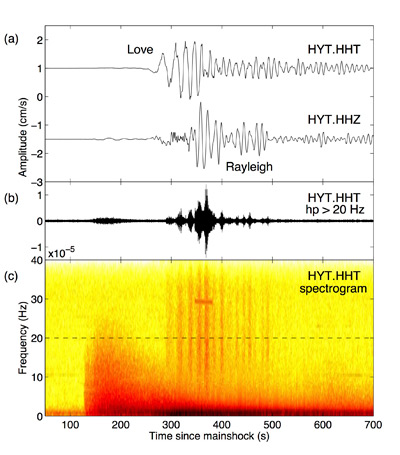Triggered Seismic Activity in Geothermal Regions
and Along Strike-Slip Faults
of the Western Hemisphere
By:
Chastity Aiken
Georgia Institute of Technology
Click for a Live Broadcast.

Abstract
Dynamic stresses caused by large earthquakes are capable of triggering a wide range of seismic/aseismic responses at remote distances. These responses include instantaneously triggered microearthquakes, deep tectonic tremor, earthquake swarms, slow-slip events, and near-surface icequakes. Systematic studies of these triggered phenomena not only help us to understand how large earthquakes affect seismic/aseismic processes at remote distances but also help improve our understanding of the necessary physical conditions responsible for the generation of seismic activity.
In this talk I present two recent studies: (1) a comparison of triggered microearthquakes in three geothermal regions of California and (2) a comparison of triggered tremor on four strike-slip faults in the Western Hemisphere. Triggered seismic activity is characterized as being triggered by the surface waves of large, distant earthquakes. Triggered earthquakes in geothermal regions are generally small magnitude (M<4) and have distinct P and S waves, whereas triggered tremor is a low-amplitude, emergent signal with no distinct P wave.
After identifying the large earthquakes that trigger seismic activity, we analyze and compare the peak ground velocities, seismic wave incidence angles, amplitude spectra of all distant earthquakes we examined, as well as the background activity in each region to determine the factors that promote triggering in geothermal regions and on strike-slip faults.




